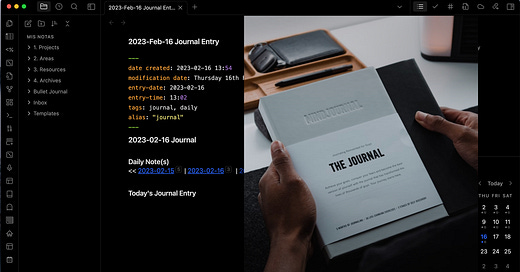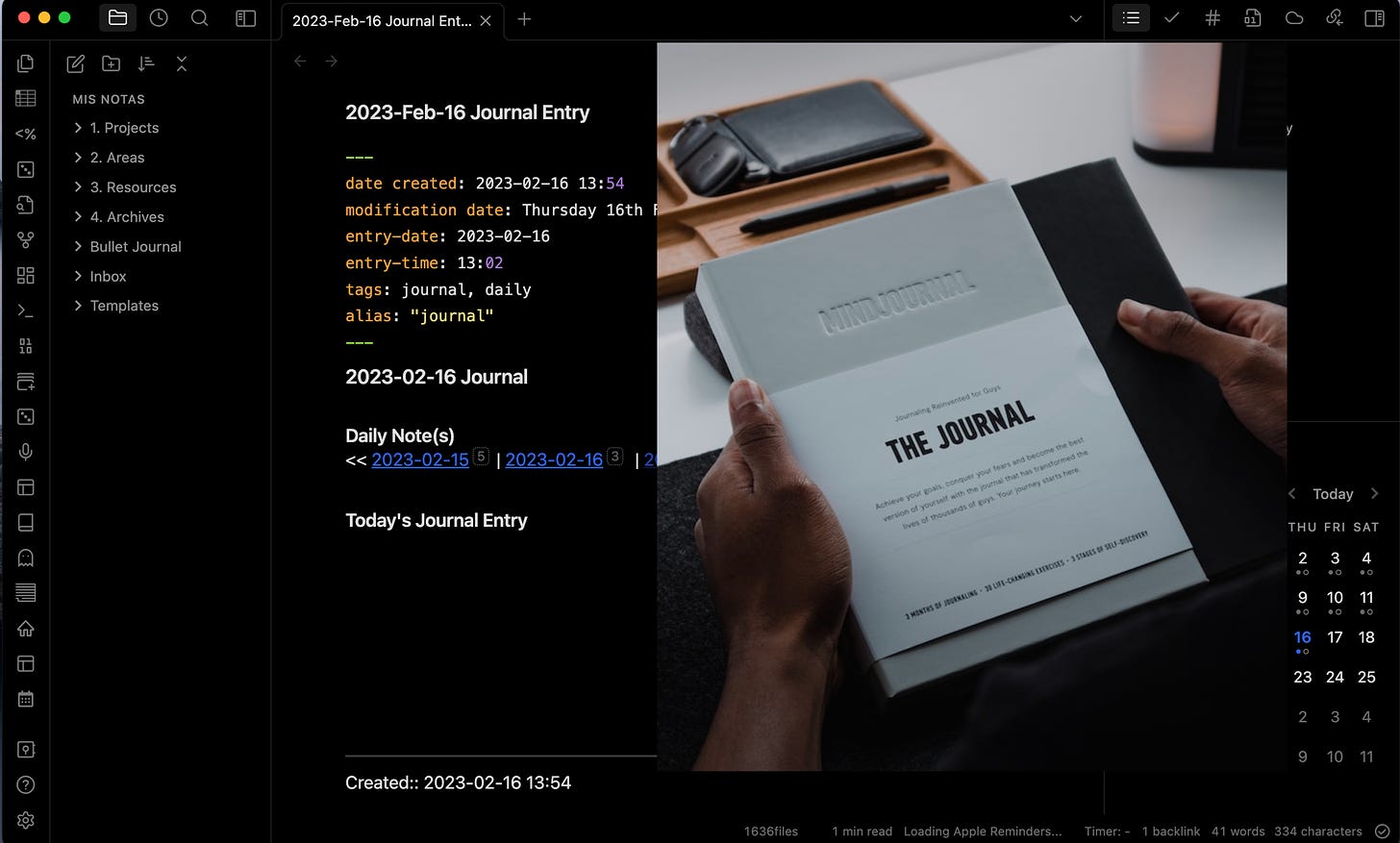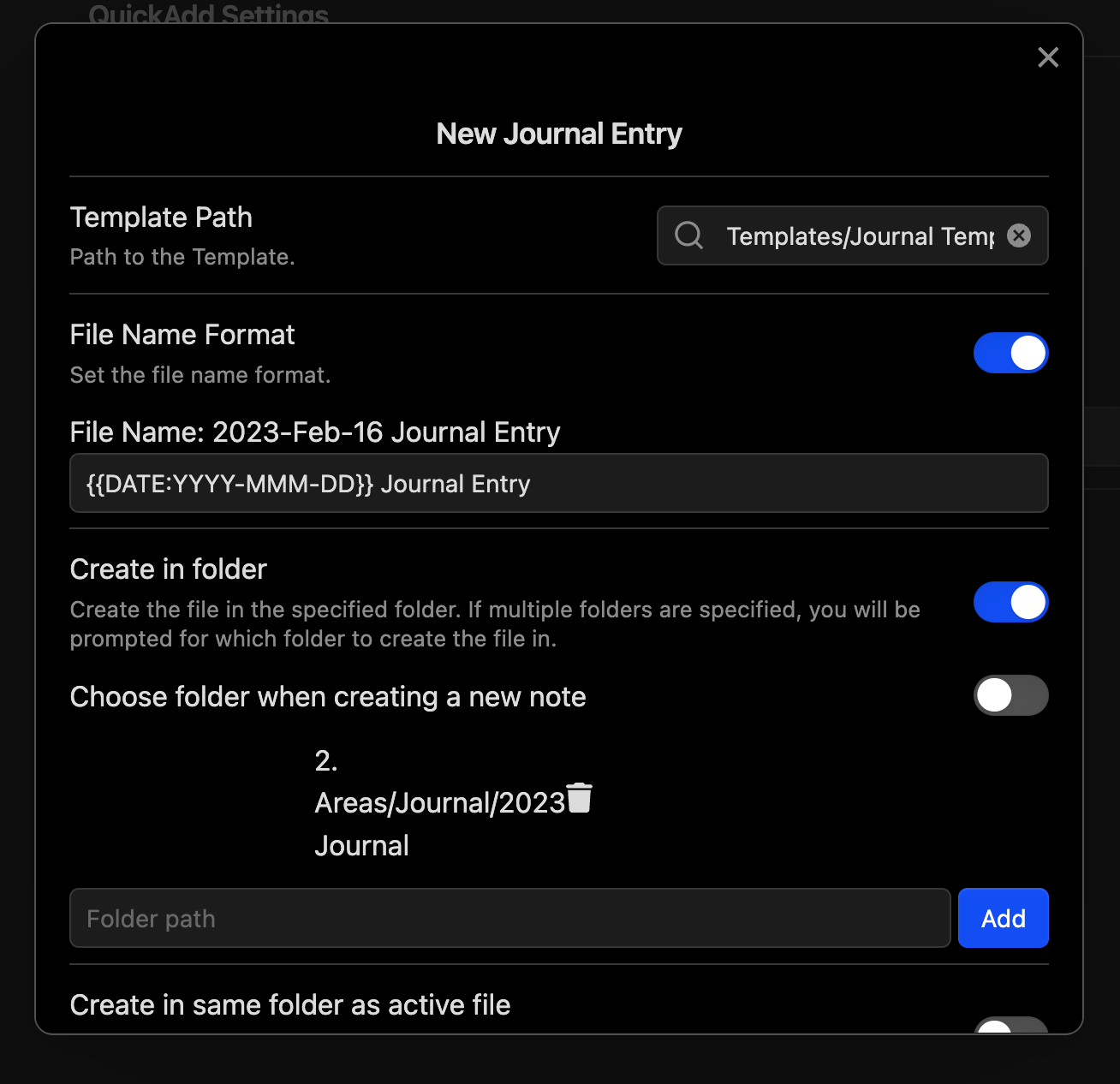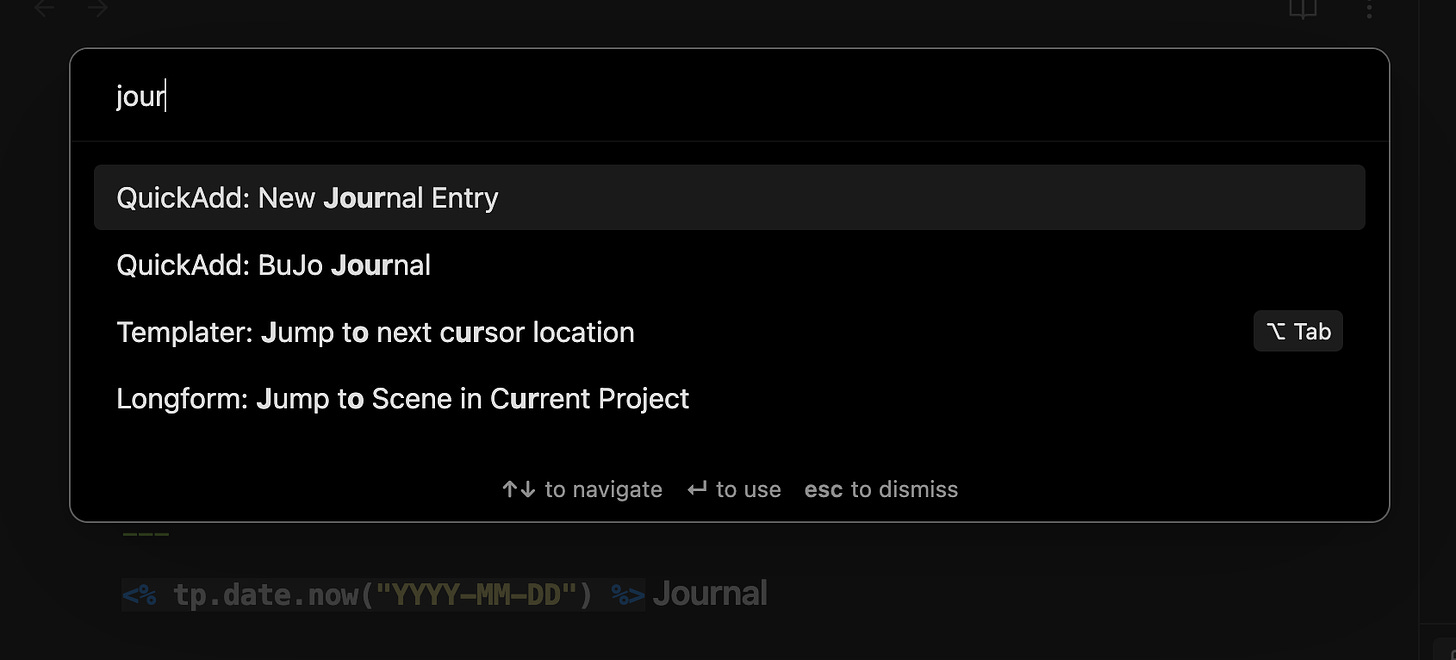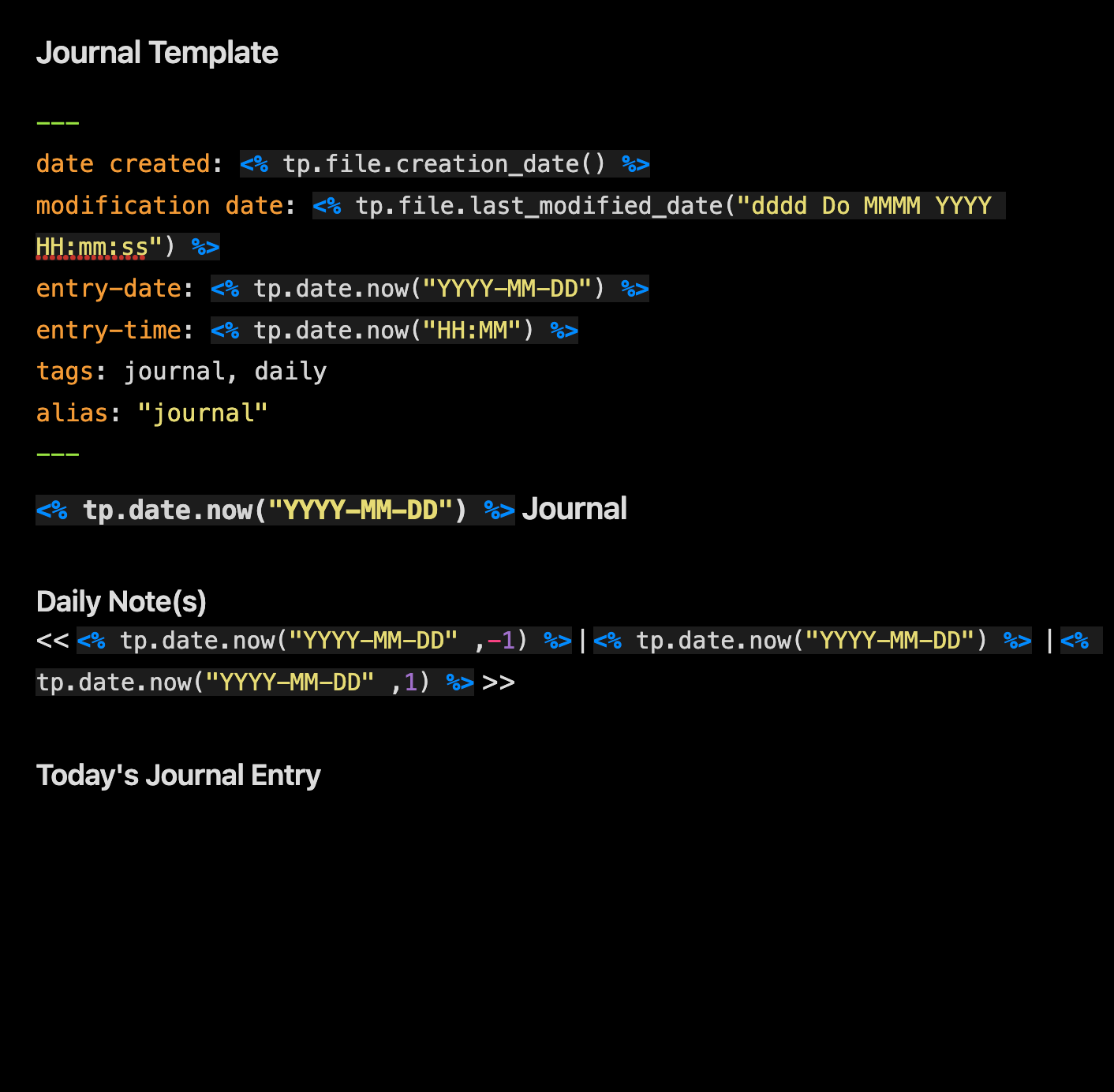My Premium Obsidian Template Series: How to Use Obsidian for Daily Journaling
Keeping a daily journal can profoundly impact your mental and physical well-being and is a valuable tool for self-reflection and personal growth. With Obsidian, I can create and automate a journal entry template by following these easy steps.
Writing in a journal daily has become a widespread habit for many people, and for a good reason. Keeping a daily journal can profoundly impact your mental and physical well-being and is a valuable tool for self-reflection and personal growth.
Journaling can serve as a form of therapy. Writing down your thoughts, feelings, and experiences can help you process and understand them more deeply and provide a safe space to express yourself without judgment. Journaling can be particularly helpful for managing stress, anxiety, and depression, as it allows you to confront and make sense of difficult emotions.
As stated in previous articles, I decided at the end of 2022 to make Obsidian my daily driver for note-taking. Through Obsidian's powerful plugins, I created a Daily Stoic Reflection template.
In this article, I will walk through my process.
Obsidian Basics & Plugins
Before going forward, I assume you are already aware of the basics of Obsidian. If not, here are a few articles to help get you started:
Getting Started with Obsidian: How to Use This Powerful Note-Taking App
My Updated Obsidian Workflow: How I Stay Organized and Get Things Done
These are the Essential Obsidian Community Plugins: The Best of the Best
Here are some helpful Obsidian starter blog posts from others in the Obsidian community:
You will need the following Obsidian Community Plugins to use my template:
Templater
QuickAdd
Periodic Notes
Dataview
How I Approach Templates
My thought process when I build templates is to best future-proof in anticipation of where I might go at some point in my workflow. I treat productivity as something constantly evolving and growing. After all, I started my digital note-taking journey with Evernote, jumped into Apple Notes, graduated to Bear Notes, and detoured with Craft.do until I finally settled on Obsidian.
Since I use Dataview and Templater, I value starting every template with metadata. Dataview and Templater provide an excellent combination to track your notes for future tables or analyses you might be interested in doing down the road.
How the Template Works
After creating the template, I used the plugins to automate my process.
Using QuickAdd & The Command Palette
With QuickAdd, I can create a shortcut that I can access via Obsidian's Command Palette. Command Palette is similar to MacOS's Spotlight but built only for Obsidian and your vault's notes.
First, I create a shortcut using QuickAdd.
After creating the shortcut, I use the command palette to find my shortcut and create a new journal entry by simply typing "journal." Usually, that is all I need to do before my shortcut populates.
This method allows me to automate this process and store the note new note where I want it to go.
It grabs the journal template and creates a new note.
Stores the note in my preferred designated folder for my journal entries.
Breaking Down my Template
Date Created & Date Modified
My go-to metadata for every note is "date created" and "modification date." Even though I'm technically tracking this elsewhere, I like having that data captured. This kind of metadata is helpful because, as mentioned in my Daily Note Template article, I have two tables that track every note I've created that day and every note I've modified that day.
Tags
Tags were my favorite way of organizing my notes when using Bear Notes. I still use tags in Obsidian, though less than before. I look at tags as a backup to my Obsidian vault's indexing features. Tags can also be helpful when I want to look at Obsidian's graph view of my notes.
Alias
With Dataview, one can create an alias for their notes. An alias further helps Dataview identify different categories of notes. For example, I use the "daily" alias for my daily notes. I use the "journal" template for my Stoic Reflections and Journal templates. I am still looking for a reason to use this feature related to my need to future-proof my notes.
Title
I have set up my template to grab the current date in the format "YYY-MM-DD." Followed by the word "Journal."
By doing so, my title always populates in the following way:
2023-03-01 Journal
2023-0302 Journal
Daily Note Connection
The first part of my template borrows some code I already have in my daily note. This helps me better connect to my daily note when needed.
I like to link my journal entries in my Periodic Weekly note. For the time, I do this manually by creating a wikilink to the journal note for each day of the week after I've made it.
Today's Journal Entry
The last section is the actual journal entry. I designed my template to start this section with an H2 element that reads: "Today's Journal Entry." And that's it.
The rest is simply me writing my actual journal entry.
Journaling is Therapeutic
In addition to its therapeutic benefits, journaling can improve memory and cognitive function. Writing about your experiences helps consolidate them in your memory, making it easier to recall them later. Additionally, writing requires you to focus and engage with your thoughts meaningfully, which can help you develop problem-solving skills and increase creativity.
Keeping a daily journal can also be valuable for personal growth and self-discovery. By reflecting on your thoughts, emotions, and experiences over time, you can gain greater insight into your behavior patterns and beliefs and work towards becoming the best version of yourself. Journaling can also help you set and achieve your goals and track your progress over time.
Aside from these mental and emotional benefits, journaling can positively impact physical health. Research has shown that writing about stress and negative experiences can help to lower stress hormone levels and boost immunity. Additionally, writing about gratitude can increase feelings of happiness and well-being.
Conclusion
Writing in a journal daily is a powerful tool for self-reflection and personal growth. Whether you use your journal as a form of therapy, a tool for cognitive improvement, or a means of tracking your progress, writing can profoundly impact your mental and physical well-being. So why not try it and see what benefits you can reap from this simple habit?
Download a Copy of the Template
If you would like to download a copy of the Daily Journal Entry template I have created for yourself, you can do so here:
TEMPLATE: My Premium Obsidian Daily Journal Template
Please NOTE: The template is only available to paying members.


